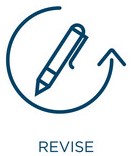 Imagine this: You spent months meticulously crafting your grant application. The research problem is well-defined, and the methodology is solid. However, when the reviewers sit down to assess your proposal, they find themselves asking, “So what?” Oof.
Imagine this: You spent months meticulously crafting your grant application. The research problem is well-defined, and the methodology is solid. However, when the reviewers sit down to assess your proposal, they find themselves asking, “So what?” Oof.
Over my last 15 years consulting on grant applications, I can tell you that “so what?” is the most common comment I leave in proposals. I’ve had countless clients confess that they dread seeing this appear in their drafts because it pushes them to better articulate the relevance of their work—its implications, its importance, and why the audience should care.
Even in the case of a well-structured grant proposal, when the “so what?” question isn’t addressed effectively, reviewers may be unable to see why that particular research is worth funding. They may not be convinced that the work will make a significant impact, fill a critical gap, or advance the field in a meaningful way. So what? Well, they’re going to have a hard time promoting the work as meritorious, and your chances of funding just got slimmer.
This pitfall isn’t limited to grant proposals—after all, we’re dealing with a core component of effective communication—and I see it just as often in manuscripts and presentations. So what? This problem is fixable, and making this fix has the power to instantly take your proposal to the next level, bringing you closer to achieving your goals.
The Power of “So What?”
The “so what?” question forces you to step back and consider the broader context of your work. It’s a challenge to move beyond the specifics of your research and think about its implications on a larger scale. It’s not enough to simply tell reviewers what you’re thinking or report on what you’ve already found; you must connect the dots for your audience and make the relevance of your work unmistakably clear.
Here’s why asking “so what?” is so powerful:
- It Clarifies Your Message: When you can answer the “so what?” question, you clarify the main
 takeaway. You ensure that your audience understands why what you’re doing matters.
takeaway. You ensure that your audience understands why what you’re doing matters. - It Strengthens Your Argument: By articulating the implications, you reinforce the significance of your work and build a stronger case for its value. Remember that a grant application is a request for investment and, therefore, must convey that the investment is worthwhile. Even when there isn’t money on the line, you’ll be more convincing toward your purpose when you make a strong case.
- It Engages Your Audience: When your audience understands the relevance of your work, they’re more likely to be engaged and invested in what you’re presenting. They’ll care about the work because you’ve shown them why they should. This engagement can increase the likelihood that they’ll advocate for the strengths of your proposal.
- It Helps You Stand Out: In a competitive landscape, clearly articulating the significance of your work can set you apart from others. Reviewers, readers, colleagues, and stakeholders are more likely to remember your work if they can easily grasp its importance. You’ll also be supplying them with key concepts for when they discuss your application.
How to Incorporate “So What?” into Your Writing
Here are some practical strategies for getting to the so what:
- Ask Yourself Early and Often
Don’t wait until the final stages of writing to ask, “so what?” Start asking this question from the very beginning, as you’re planning your research and outlining your proposal or manuscript. Consider the broader implications of your work at every stage, and make sure these implications are woven into your narrative. As your draft develops, check in at the sentence and paragraph level. Statements like “This problem has never been studied before,” or “Our work will yield [some new knowledge],” should never leave us hanging.
- Think About Your Audience
When answering “so what?”, put yourself in your audience’s shoes. What are their interests, concerns, and priorities? How does your work address these? Tailor your message to resonate with your specific audience. This might feel especially challenging if the potential reviewers come from a range of backgrounds and specialties, but it is worth working hard to achieve this messaging.
- Connect the Dots
Don’t assume your audience will automatically see the connections between your work and its broader implications. Be explicit in drawing these connections. For example, if your research could lead to new therapeutic interventions, don’t just hint at this—clearly explain how your findings could pave the way for these developments. If your work is purely about knowledge generation, then what are the implications of having that new knowledge? Reviewers can’t effectively assess what’s not on the page.
- Use Concrete Examples
When articulating the significance of your work, use concrete examples to illustrate the potential impact. This makes your message more relatable and easier for your audience to grasp. For example, if your work can advance the field, describe a specific scenario in which your findings could be applied.
- Revise with “So What?” in Mind
As you’re editing your work, keep the “so what?” question front and center. After each section, ask yourself, “Have I clearly communicated why this matters?” If the answer is no, go back and revise until the significance of your work is unmistakably clear.
Conclusion
The next time you’re working on a grant proposal, don’t shy away from asking yourself the tough questions. Embrace the challenge of answering “so what?” and use it as a tool to enhance the clarity, strength, and impact of your work.
Remember, the goal of your research is not just to generate data—it’s to contribute something meaningful to your field. By asking “So what?” you ensure that your work doesn’t just add to the noise but actually advances knowledge, solves problems, and makes a difference.
Your audience—and your future self—will thank you.
Need help figuring out how to answer the “so what” in a compelling way? Let’s talk.
